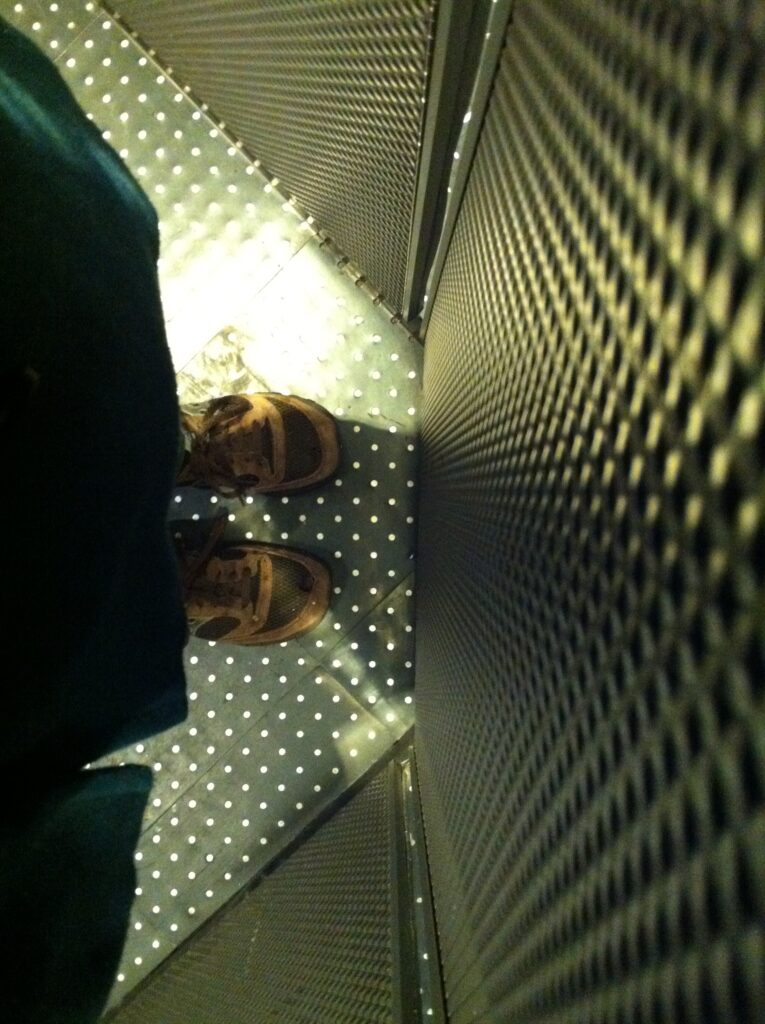
Every day, I notice the interior of the elevator at 2 W. 13th Street. There is nothing new to it but I am still somehow surprised to see them each time I enter: a grid of dots on the floor, a honeycomb-textured wall, and thin reflective-yet-distorted strips surround you as you step inside. It is a bit more glam than a typical office building’s conveyance. The surfaces compete against each other, directing attention from one to the other without providing a place for the eye to rest.
During this short elevator ride, we expect a moment of passive privacy, but instead we are jarred back to engagement. The idea of a temporary private space within a public place is an appealing one. It is a luxury that is hard to control and predict—ours for a moment and then gone. It typically allows for a brief respite, of catching your breath or a small glimpse of reconnecting with yourself. But this particular elevator is different—it does not allow you to forget that you are in an elevator. The pattern fractures and breaks up the space of quiet reflection; it demands that we remain aware of its physicality.
Despite having had to leap across the void to escape, in a very old and very stuck elevator, I am able to set aside that memory to enjoy the modern convenience. My young son has grown up with an elevator in his home, and he has only recently begun questioning how it is possible for the same doors to close on one floor and open on another. I am therefore re-learning this thing we take for granted, and considering the absurdity of trusting the machinery that moves our bodies.
Returning to the Parsons fun-house elevator, does this count as an inward or outward moment? Is the mash of surfaces and light invasive, interrupting our reconnection with ourselves? The surfaces scream distraction, but they reflect our image back to us, allowing self-contemplation. Rather than being able to examine our inner selves, it forces us to consider a distorted version of our outer image, and our presence within the mechanical system. Is it more or less intrusive than any other elevator would be?
When you are alone in an elevator, are you aware of your body in the space?
Can you avoid thinking about yourself in an elevator?
Do the reflections create a more social or interactive space?
Niki Kriese
Staff, Parsons The New School for Design

